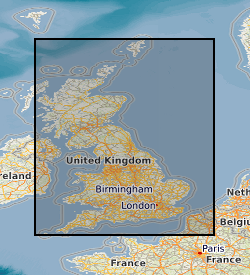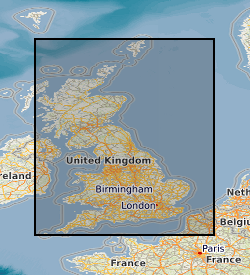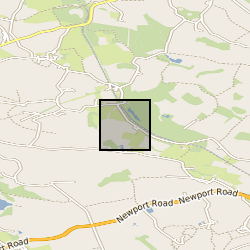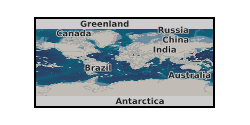Soil properties
Type of resources
Topics
Keywords
Contact for the resource
Provided by
Years
Formats
Representation types
Update frequencies
Scale
-

The DiGMap Plus dataset is a series of GIS layers describing the engineering, geochemical and geophysical properties of geological materials from the base of pedological soil down to c. 3m depth (ie the uppermost c.2m of geology). These deposits display a variable degree of weathering, but still exhibit core characteristics relating to their lithologies. The 'Resistivity' dataset covers England, Scotland and Wales and characterises the material resistivity (based on modelled distributions of clay and moisture content, to 2m depth.
-

The National Soil Parent Material dataset is a GIS describing the geological material from which topsoils and subsoils (A and B horizons) develop (i.e. from the base of pedological soil down to c. 3m). These deposits display a variable degree of weathering, but still exhibit core geological characteristics relating to their lithologies. The dataset covers England, Scotland and Wales and characterises parent material lithology, texture, mineralogy, strength and a range of other soil/parent related properties.
-

The data comprise of temperatures (degC) from a fibre optic distributed temperature sensor and soil moisture in the form of volumetric water content (VWC), expressed in m3/m3. The measurements were performed in a vegetated hillslope in Staffordshire, UK, in the context of the NERC funded project DiHPS: A Distributed Heat Pulse Sensor Network for subsurface heat and water fluxes. The site was equipped with: 15xVWC point probes (5TM, Decagon Devices) installed at 5 locations along the hillslope. At each location, 3x5TM probes were inserted in the soil at depths of 0.10m, 0.25m, 0.40m from the soil surface 1,512m of fibre optic cable for Active DTS measurements. The fibre was buried in the soil in three overlapped loops of 504m each at 0.10m, 0.25m, 0.40m. The measurements from the 5TM were used to infer a site specific empirical relation to obtain soil moisture from Active-DTS measurements, following the approach from Sayde et al., WRR, 2010 (https://www.researchgate.net/publication/241060722_Feasibility_of_soil_moisture_monitoring_with_heated_fiber_optics)
-

Data consist of field spectral reflectance measurements and surface photographs of cyanobacterial soil crusts and other surficial materials in Diamantina National Park, Queensland. Data were collected as part of project NE/K011626/1 (associated with NE/K011464/1) Multiscale Impacts of Cyanobacterial Crusts on Landscape Stability. The reflectance data and associated surface photographs are of biological and physical soil crusts developed on claypan and sand dune surfaces alongside the Diamantina River (specifically on and around Lake Constance pan and Homestead pan. Data were collected and processed by Kevin White and Ian Davenport, using a Spectra Vista Hr1024i spectrometer with a spectralon reference panel. All data were processed using SVC Hr1024i PC Data acquisition software (version 1.6.7 Beta) to remove areas of spectral overlap. Photographs taken using a range of mobile device cameras. All field photographs are in JPEG (jpg) format. Data were collected for the purpose of assessing the ability to remotely sense presence/absence of cyanobacterial soil crusts for mapping purposes. Data are organised into a directory structure based on specific field experiments, each with its own directory structure. Dataset 1: Calcrete Reflectance Spectra, Diamantina National Park. Calcrete exposures are common in Diamantina National Park, forming flat-topped hills known locally as 'Jump-Ups'. Calcretes creat false positives with the commonly used biological soil crust indices from remote sensing data, so field spectra of calcretes were collected to characterise their spectral reflectance to assist with image processing. Dataset 2: Lake Constance Pan Mapping project Field Photographs, Reflectance Spectra and field notes, Lake Constance Clay Pan, Diamantina National Park. This dataset is a repeat survey undertaken in 2015, which revisited sample points first surveyed as part of the so-called 'MAM survey' in 2000. Dataset 3: Solar Radiation Photosynthesis experiment Field Photographs and Reflectance Spectra from three locations in Diamantina National Park, Lake Constance pan, a duneflank site on ‘Crusty Inlet dune’ (where no photosynthesis could be stimulated) and Homestead pan. The Homestead pan experiment was run twice (Winter 2015 and Summer 2016). Dataset 4: Shade netting experiment Spectral Reflectance measurements of a spectralon panel were taken under the shade netting to characterise the transmissivity of the netting at different solar elevation angles. Dataset 5: Photographic cards Spectral reflectance measurements of a set of photographic reference cards, which were included in the frame of all the surface photographs collected for this project. Dataset 6: Mobile Device experiment Field Photographs taken with a range of mobile device cameras (Moto G, Nexus 6 and Samsung Galaxy Note 10.1) and two cameras (Nikon Coolpix P610 and Nikon Coolpix 950 Full Spectrum), and associated reflectance spectra data, for 5 study sites Crusty Inlet Pan Surface, Crusty Inlet Dune North Flank, Lake Constance Pan and Homestead Dune. Dataset 7: Rainfall simulator Spectral reflectance data and associated field notes of sites used in a rainfall simulator/wind tunnel experiment, Lake Constance claypan (which formed part of the associated NERC project NE/K011464/1)
 NERC Data Catalogue Service
NERC Data Catalogue Service